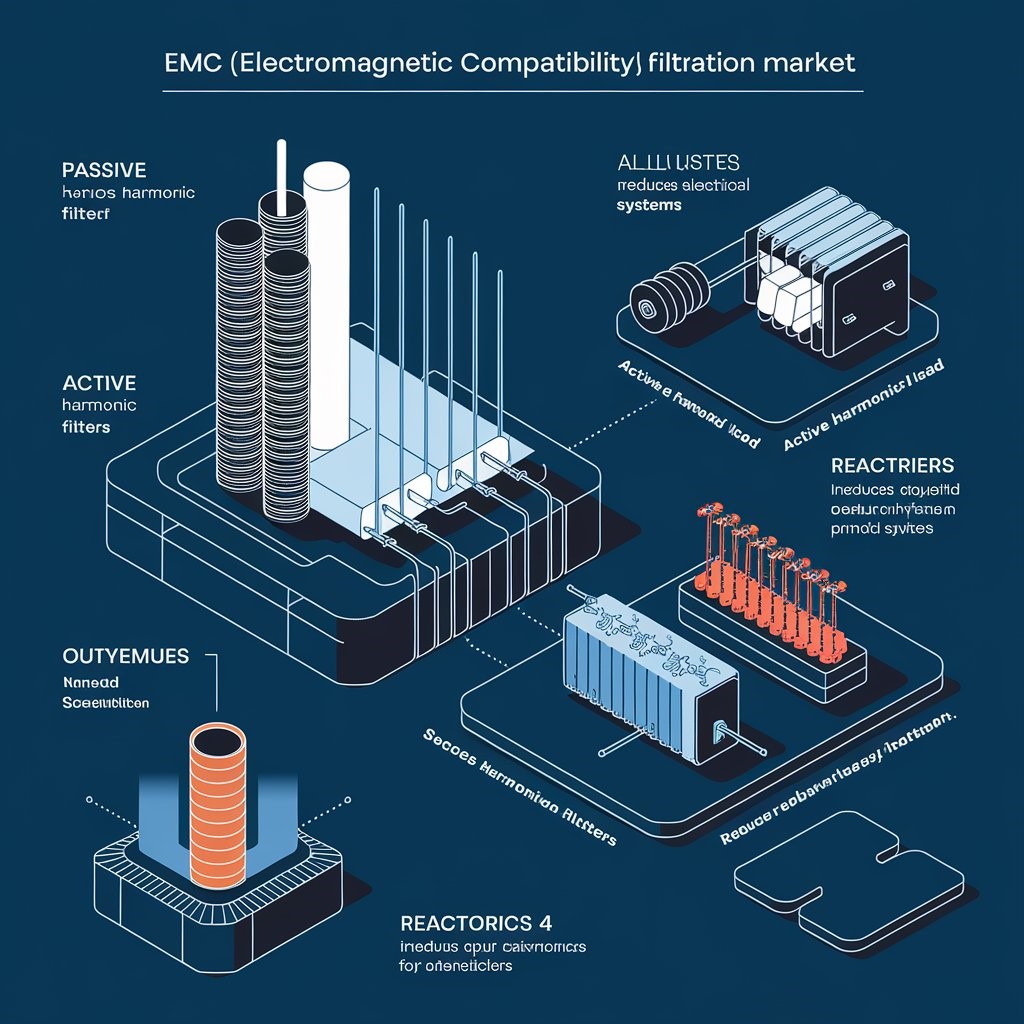As the world becomes increasingly dependent on electronic devices across all sectors—consumer, industrial, automotive, medical, and aerospace—the demand for clean, interference-free electrical environments has never been greater. In this landscape, the Global EMC (Electromagnetic Compatibility) Filtration Market is emerging as a critical enabler of safe, efficient, and reliable electronic performance. With electronic systems growing more complex and compact, the market for EMC filtration solutions is now poised for substantial expansion.
The Growing Need for Electromagnetic Compatibility
Electromagnetic interference (EMI) occurs when electromagnetic fields from one device disrupt the performance of another. As electronic devices proliferate, they often operate in close proximity, increasing the likelihood of interference. This has made electromagnetic compatibility a top priority for manufacturers and regulators alike.
EMC filters are designed to suppress these interferences, ensuring that devices can coexist without disruption. These filters block unwanted electromagnetic noise from entering or leaving a device, protecting both its operation and the surrounding systems. In sectors like medical equipment, defense electronics, and automotive systems—where reliability and safety are paramount—EMC filtration is not just beneficial but essential.
Market Drivers: From Smartphones to Smart Factories
One of the primary factors fueling the growth of the EMC filtration market is the explosive growth in consumer electronics. The global appetite for smartphones, laptops, wearables, and IoT-enabled home devices has led to a dense electromagnetic environment, necessitating more advanced and compact EMC filters to maintain device performance and compliance with emission standards.
Meanwhile, the industrial sector is rapidly digitizing through Industry 4.0 initiatives. Smart factories with high levels of automation, sensors, robotics, and wireless systems require robust EMC solutions to avoid costly downtime or equipment failure due to EMI. Similarly, the automotive industry, particularly with the rise of electric vehicles (EVs) and autonomous systems, demands advanced EMC filtration to shield sensitive components from high-voltage powertrains and external interference.
Download PDF Brochure @ https://www.marketsandmarkets.com/pdfdownloadNew.asp?id=172300360

Regulatory and Compliance Pressures
Global regulatory bodies continue to enforce stricter standards for electromagnetic emissions and susceptibility. Compliance with standards such as CISPR, FCC Part 15, and MIL-STD-461 is non-negotiable for manufacturers, particularly in sensitive sectors like aerospace, medical, and defense.
These regulatory requirements are propelling the adoption of EMC filters during the early stages of product design and development, rather than as afterthoughts. This integration into design workflows is supporting the sustained demand and technical innovation within the EMC filtration market.
Technological Innovations in EMC Filtration
The EMC filtration industry is also benefiting from technological innovation, with manufacturers developing filters that are smaller, more efficient, and capable of operating across broader frequency ranges. Multi-functional filters, combining surge protection with EMI suppression, are gaining popularity for space-constrained applications.
Moreover, the adoption of modular filter designs is increasing, enabling faster customization for different use cases while reducing manufacturing complexity. Innovations in materials, such as nanotechnology and high-frequency magnetic cores, are also enhancing filter performance in compact formats, making them ideal for portable electronics and dense circuit boards.
Regional Market Dynamics
Geographically, Asia-Pacific holds a dominant position in the global EMC filtration market due to its vast electronics manufacturing ecosystem, especially in China, Japan, South Korea, and Taiwan. These countries not only produce consumer electronics but also drive innovation in automotive, industrial automation, and telecommunications—all sectors where EMC compliance is critical.
North America and Europe follow as mature markets with high regulatory standards and advanced industrial bases. In these regions, EMC filters are increasingly used in defense, aerospace, medical, and infrastructure applications, particularly as 5G networks and electric transportation systems become more widespread.
Future Outlook
As connected technologies, smart grids, electric vehicles, and digital infrastructure continue to evolve, the global demand for EMC filtration will rise in tandem. EMC Filtration Industry worth $1.59 billion by 2030, driven by a combination of technological advancement, regulatory compliance, and escalating system complexity.
In the years ahead, EMC filtration will become an even more integral part of product design across industries. As devices get smarter and smaller, the need for high-performance, compact, and cost-effective EMI mitigation solutions will be central to maintaining performance, compliance, and user satisfaction.
The Global EMC Filtration Market stands at the intersection of technological innovation and operational necessity. With the exponential growth in electronic devices and the increasing interconnectivity of systems, EMC filtration is no longer a specialized solution—it is a universal requirement. As industries continue to scale digitally, the demand for electromagnetic compatibility will only intensify, ensuring strong and sustained growth for the market in the years to come.
FAQ – Global EMC Filtration Market
1. What is EMC filtration?
Electromagnetic Compatibility (EMC) filtration refers to the use of filters and suppression devices to reduce electromagnetic interference (EMI) in electrical and electronic systems. These filters ensure that a device neither emits excessive EMI nor is overly susceptible to it, allowing it to operate reliably in environments with other electronic systems.
2. Why is EMC filtration important?
EMC filtration is essential to ensure:
-
Compliance with global regulatory standards
-
Reliable and safe operation of electronic devices
-
Protection of sensitive components from external interference
-
Minimization of malfunctions and signal disruptions
It is especially critical in sectors such as medical devices, automotive systems, aerospace, and industrial automation.
3. What are the main types of EMC filters?
The primary types include:
-
Power line filters (for AC and DC lines)
-
Signal line filters
-
Feedthrough filters
-
Board-level EMI filters
Each is tailored to reduce specific forms of interference depending on the application.
4. Which industries drive demand for EMC filtration?
Key industries include:
-
Consumer electronics
-
Automotive and electric vehicles (EVs)
-
Industrial automation and robotics
-
Healthcare and medical devices
-
Telecommunications and 5G
-
Aerospace and defense
5. How does IoT impact the EMC filtration market?
IoT significantly increases the number of connected devices in homes, factories, and cities, creating dense electromagnetic environments. EMC filtration is crucial to ensure these devices can coexist without causing or experiencing disruptive interference.
